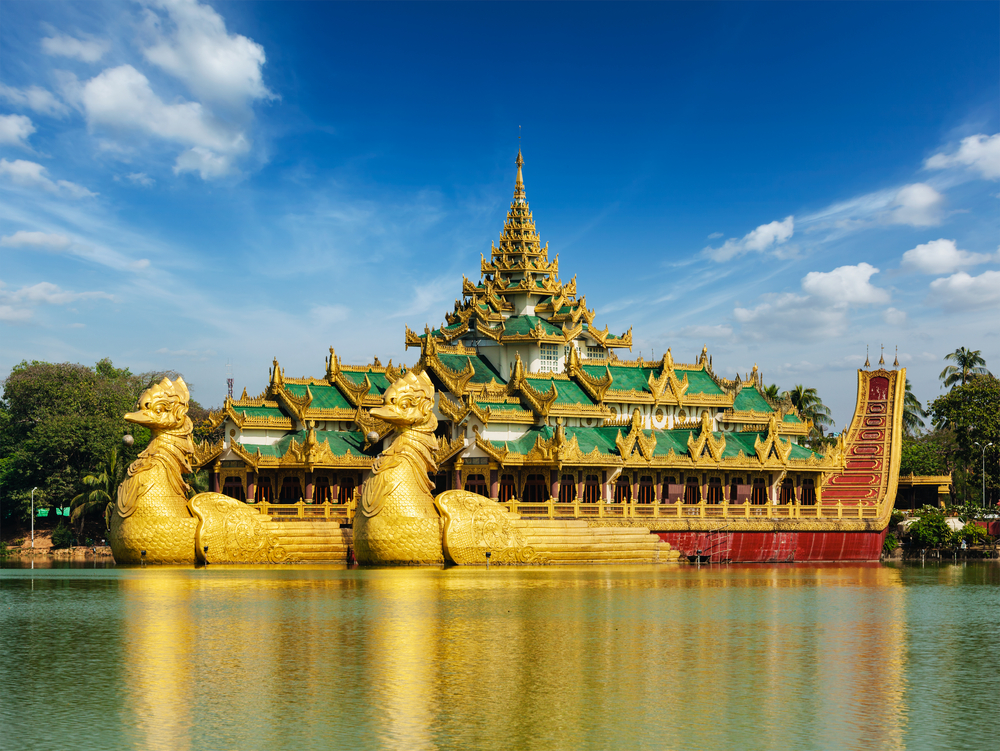

Kandawgyi Lake, also known as Royal Lake, is one of the most serene and picturesque spots in Yangon, Myanmar. Its history in tourism dates back to the colonial era when the British ruled Burma. As a part of their urban development plan, the British administrators enhanced the appeal of the lake and its surroundings. Initially, the lake was a natural body of water that served a practical purpose in providing clean water to the city. Over time, Kandawgyi Lake became a popular recreational area for colonial officers and high-ranking officials.
During the early 20th century, the lake and its environs witnessed the establishment of the Kandawgyi Gardens, further bolstering the location's attraction to both locals and tourists. The unique charm of the lake is enhanced by the presence of the Karaweik Palace, a magnificent structure that resembles a royal barge, built in 1972. This iconic landmark has become a symbol of the city, drawing innumerable visitors every year.
Over the years, Kandawgyi Lake has remained a staple in the tourism landscape of Yangon. The introduction of walking paths, the proliferation of local teahouses, and the incorporation of cultural shows have made the lake an even more attractive destination for tourists seeking both relaxation and cultural enrichment. The lakefront area now also boasts high-end restaurants and recreational facilities, making it a destination that appeals to a wide range of visitors.
The influx of tourism in Myanmar, especially after the country's political opening in the 2010s, increased international interest in Yangon's landmarks, including Kandawgyi Lake. The peaceful mornings and the glowing sunsets viewed from the lake's shores have become an essential experience for photographers and nature lovers traveling to Myanmar.
The most recent tourism trends at Kandawgyi Lake involve the rise of eco-friendly and sustainable practices. Tour operators and local businesses are increasingly mindful of the ecological significance of the lake and are working towards preserving its beauty for future generations. This entails encouraging walking tours, bird watching, and the reduction of motorized watercraft on the lake.
Additionally, the area around Kandawgyi Lake has seen a trend towards boutique accommodations and quaint cafés that cater to tourists looking for authentic experiences over generic hotel stays. Virtual Tourism has also gained momentum, with online viewers being offered virtual walks and live streams of the lake's stunning surroundings amid travel restrictions due to global events such as the COVID-19 pandemic.
The recognition of Kandawgyi Lake as a significant social hub has also led to the organization of cultural festivals and events at the lake, further reinforcing its role in both the local community and the tourism industry of Yangon. These events often showcase traditional Myanmar music, dance, and crafts, offering tourists insight into the rich cultural tapestry of the nation.
Kandawgyi Lake stands as a testament to Yangon's allure as a travel destination—a serene oasis in the heart of a bustling city. Its ongoing evolution in the realm of tourism continues to enchant visitors from around the world with its tranquil waters, lush environs, and the promise of a genuine encounter with Myanmar's unique heritage.